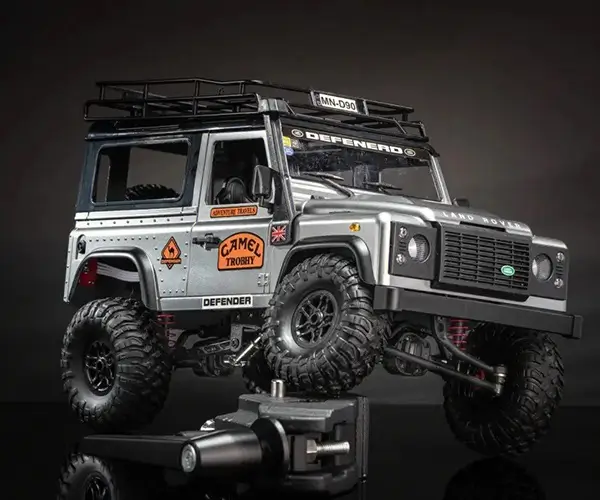Playing a pivotal role behind the scenes of countless miniature machines and robotic systems, N20 micro gear motors have garnered widespread popularity among engineers, hobbyists, and innovators alike. Their compact size, reliable torque, and versatility make them ideal for a vast array of applications—from small-scale robotics to precise automation devices. Yet, while the motor itself is vital, the support system—especially the mounting bracket—often makes all the difference between a project that works seamlessly and one that falls short in stability, performance, or durability.

The Significance of Mounting Brackets in Micro Gear Motor Assemblies
At the core of every effective N20 micro gear motor setup lies a well-designed mounting bracket. This small but crucial component ensures that the motor stays securely in place during operation, absorbs vibrations, and provides a reliable framework for integration into more complex systems. Think of it as the skeletal foundation that holds everything together—without it, even the most capable motor can become a liability rather than an asset.
For those venturing into robotics, automation, or DIY projects, understanding the importance of selecting the right mounting bracket can significantly influence the success and longevity of their creations. A high-quality mounting bracket not only simplifies installation but also enhances the efficiency of the motor by minimizing misalignments, reducing wear and tear, and facilitating precise control.
Design Features to Consider in Mounting Brackets for N20 Micro Gear Motors
When choosing a mounting bracket, several design features and material characteristics come into play:
Compatibility and Fit: The bracket must accommodate the specific dimensions of the N20 micro gear motor, including its flange size and mounting holes. An exact fit ensures stability and prevents unnecessary vibrations or movements that can affect performance.
Material Strength and Durability: Common materials include plastic, aluminum, and steel. Each offers distinct benefits; plastics are lightweight and inexpensive, while metals like aluminum and steel provide greater strength and resistance to mechanical stresses—especially important in heavy-duty or high-torque applications.
Ease of Installation: Simple mounting mechanisms, pre-drilled holes, and intuitive design make assembly quicker and less prone to errors. Some brackets come with integrated clamps or screws designed for quick attachment.
Vibration Damping Properties: Given that micro gear motors produce vibrations during operation, certain brackets incorporate damping features—like rubber pads or flexible joints—to absorb shocks and reduce noise.
Customizability and Flexibility: In complex projects, adjustable brackets or modular designs that accommodate different orientations can be immensely helpful. This versatility allows for fine-tuning the motor’s position to optimize mechanical and electrical performance.
Benefits of Using Proper Mounting Brackets
Integrating the right mounting bracket with your N20 micro gear motor brings multiple advantages:
Enhanced Stability: Secure placement reduces motor wobble and misalignment, translating into smoother operation and precise control—crucial for projects demanding high accuracy like robotic arms or CNC machines.
Simplified Assembly & Maintenance: Well-designed brackets streamline installation and removal, saving time and reducing the risk of damaging delicate components during upkeep.
Protection and Longevity: Proper mounting minimizes exposure to shocks, vibrations, and mechanical stress, extending the lifespan of both the motor and its associated components.
Versatility in Application: Mounting brackets can be tailored to fit different chassis or enclosures, allowing hobbyists and professionals to adapt them for various uses—from drones and miniature vehicles to educational kits.
Insights from Industry Leaders and Enthusiasts
Manufacturers and seasoned engineers consistently emphasize that investing in quality mounting hardware is often overlooked but critical. Many professional projects include custom or semi-custom brackets designed specifically for their unique setups, highlighting the importance of compatibility and precision.
Hobbyist communities frequently share insights and modifications—like adding rubber isolators or tweaking mounting hole positions—for DIY projects. These grassroots innovations underscore the importance of flexibility in design and the value of accessories that support the motor’s performance.
Choosing the Right Mounting Bracket: Practical Tips
Match Specifications: Always verify motor dimensions and mounting hole patterns before purchasing or designing a bracket.
Material Suitability: Consider your application's operating environment—e.g., temperature, exposure to moisture, or mechanical stress—to select appropriate materials.
Prioritize Ease of Installation: Look for brackets with user-friendly features like quick-connect screws or adaptable mount points.
Assess Vibration Control: For sensitive applications, opt for brackets with damping features to maintain high precision and reduce noise.
Customization Options: If your project requires unique configurations, choose brackets that can be modified or combined with other accessories for tailored performance.
With these elements in mind, selecting or designing the ideal mounting bracket becomes a strategic decision that empowers the full potential of N20 micro gear motors.
Leveraging innovations in modular drive technology, Kpower integrates high-performance motors, precision reducers, and multi-protocol control systems to provide efficient and customized smart drive system solutions.




































